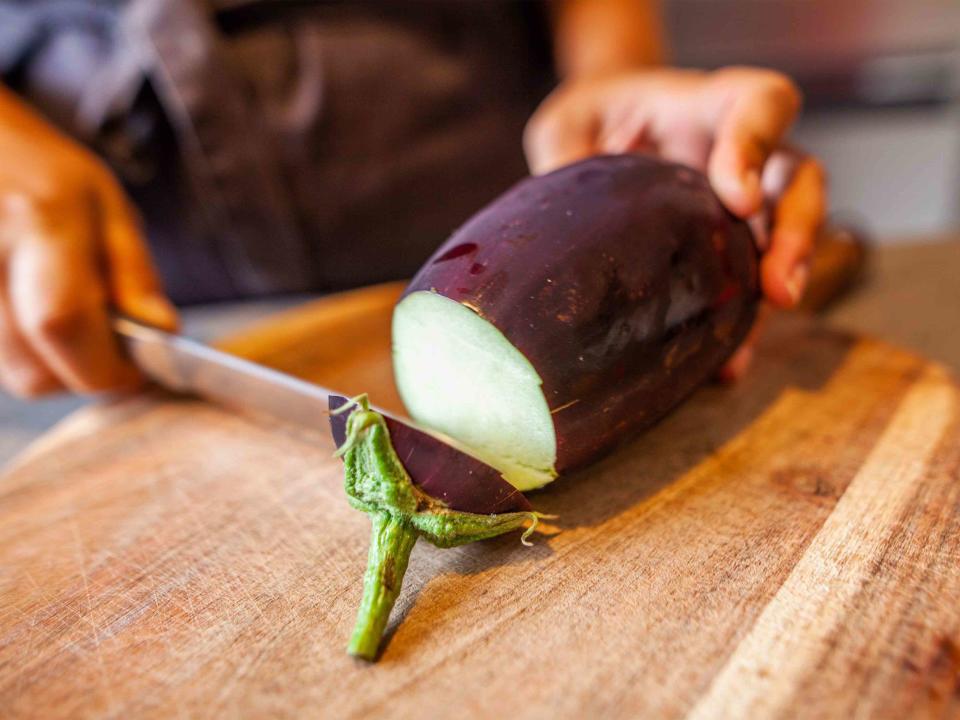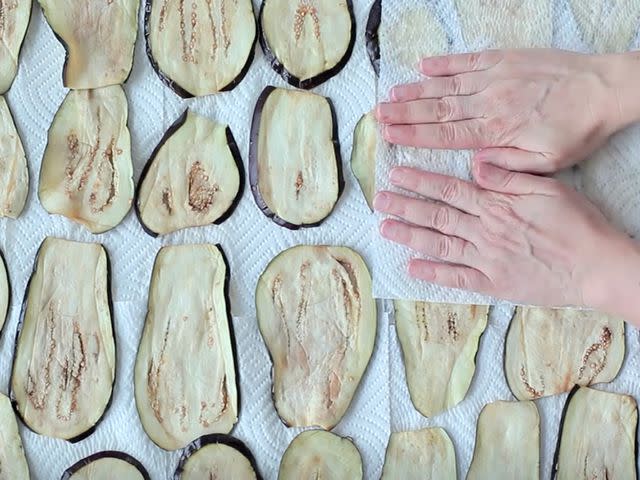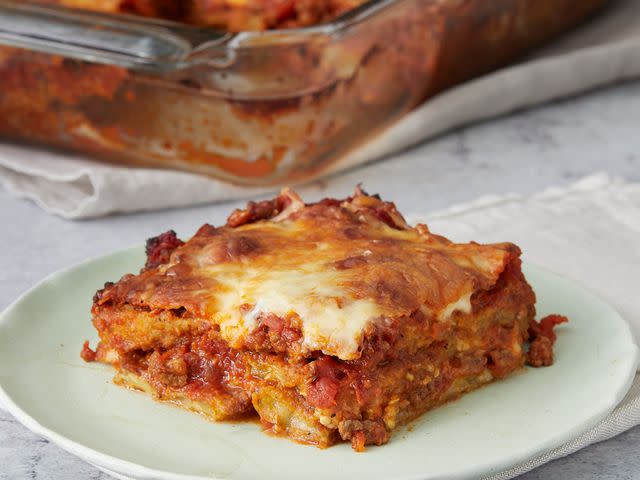The Trick to Making Eggplant Taste Like a Restaurant’s
It's so worth the extra step.

Capelle.r/Getty Images
Despite the fact that eggplant is available year-round, it just hits different in peak season. Not only is the produce showing up at all the farmers' markets, willing me to take it home, but I'm also more than ready to tuck into a gooey, cheesy stack of eggplant Parmesan or a steaming plate of comforting moussaka as we usher in the start of fall here in the Northeast. So, as I throw open the windows to let the cool evening air in and get ready to prep my farm stand haul, I'm thinking back on my restaurant days and calling to mind the most important step in getting the most out of my eggplant dishes.
Restaurants have already proven they know their way around asparagus, green beans, mushrooms, and Brussels sprouts—it's no wonder we trust the pros for eggplant advice, too. And, no surprise, it starts with a kitchen MVP: salt.
Why You Should Salt Eggplant Before Cooking
There are many moments I have mentally blocked from my time in restaurant kitchens (IYKYK), but luckily, I remember certain invaluable tips and tricks. One such nugget is that salting eggplant—sliced or diced—and letting it sit is the optimal way to handle this nightshade darling.
Eggplant has come a long way from its bitter roots. Much like Brussels sprouts, eggplant has gone through selective breeding over the decades to become more palatable to the masses. So, while salting is no longer all about balancing out the bitter notes from days of yore, it's still a crucial step for overall taste and texture. As with my go-to method for prepping zucchini, letting eggplant sit with salt draws out excess moisture and elevates the flavor. Yes, it takes extra time and effort, but it's well worth it, in my opinion, for the best-tasting finished product.
Why? Well, science. Since eggplant has a high water content (over 90 percent!), salting reduces the overall sponginess—thanks to osmosis—resulting in a firmer texture that cooks more evenly. This process also minimizes oil absorption, making the eggplant less greasy, and helps it achieve better browning during cooking.
How to Make the Best Eggplant
Luckily, the method is more simple than the explanation. Here's what you do:
Cut or slice the eggplant into the desired shape and thickness and lay it out on a paper-towel-lined sheet pan, or even in a colander over a bowl to drain.
Generously sprinkle salt evenly overtop (I use kosher).
Let it sit for a bit! A minimum of 15 minutes works, up to 1 or 2 hours. I usually allow at least 30 minutes for this step. Some people may prefer to rinse the eggplant after the salt soak, but I skip that and make sure to account for the added salt later in the dish instead.
Pat the eggplant dry with paper towels—as dry as you can get it.
Continue with your recipe of choice. However you are preparing the eggplant, it will be ready to shine.

Allrecipes
Chef Tip
Bonus restaurant hack: Spread the salted eggplant out on a sheet pan with paper towels under and over, then lay a second sheet pan on top and weigh it down with something heavy from your pantry (like tomato cans) or a hefty stockpot. The added pressure will squeeze out the moisture from the eggplant, which the paper towels will soak right up.
The aubergine will be creamy and tender on the inside yet perfectly crispy on the outside.
Another pro tip to try if the produce is extra bitter is to add sugar as well. A mix of equal parts salt and sugar works in the same way as salt alone but further balances flavors. This is especially true in stir-fry recipes where we look for those sweet and sour notes.
And finally, to replicate my favorite version of eggplant Parm from a local restaurant, I always slice the fruit extra thin, 1/8 to 1/4-inch thick, before breading and frying. It takes half a day to make it this way, but the end result is so stacked with crispy, delicate, delicious layers that I have to oblige when my family begs me to make it for a special occasion.

Eggplant Recipes to Test This This Method
Now that I've hopefully convinced you that salting your eggplant is worth the extra effort (and paper towels), here are some dishes to make this season:
Read the original article on All Recipes.


